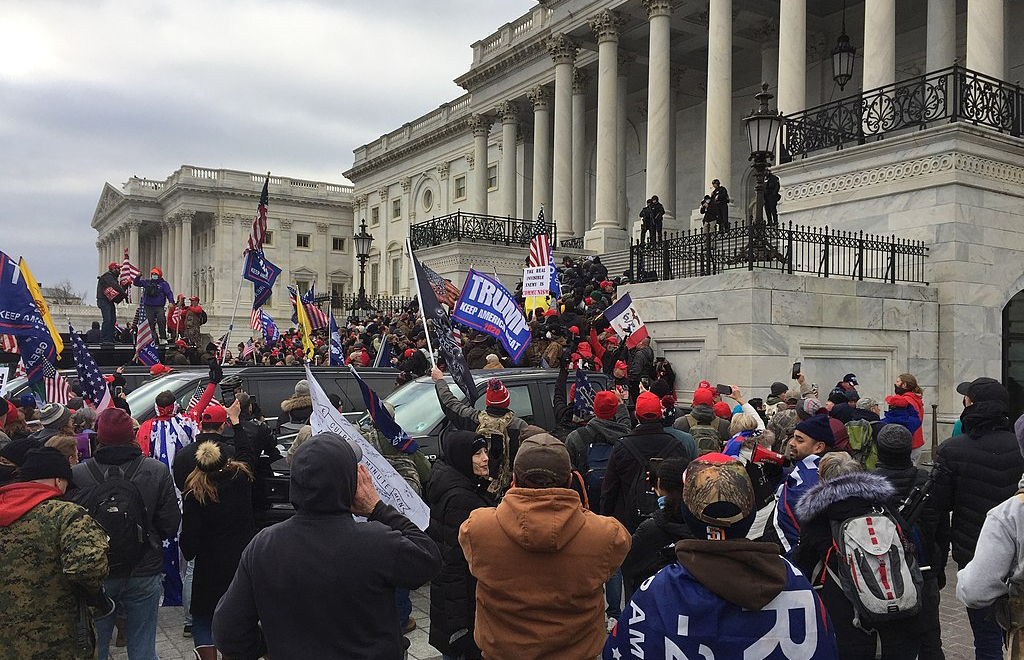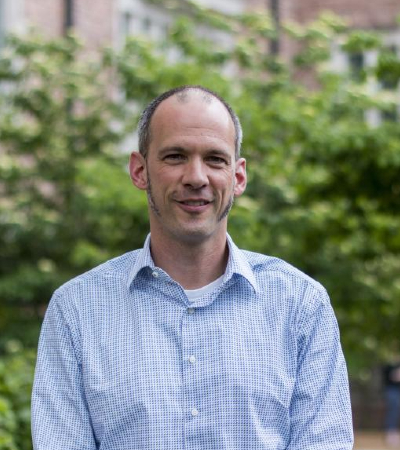See No Evil, Hear No Evil, Police No Evil
Law enforcement agencies consistently underestimate threats from white supremacists and other right-wing extremists, but there are steps they can take to be better prepared.

Published by The Lawfare Institute
in Cooperation With

Editor’s Note: One of the many upsetting aspects of the Jan. 6 insurrection at the U.S. Capitol was the passive police performance, which stands in stark contrast to the aggressive security response to Black Lives Matter protests, among others. The University of Arizona’s Jennifer Earl and David Cunningham of Washington University in St. Louis explain this common pattern of underestimating the threat from right-wing extremists, and they offer valuable suggestions on how to improve policing.
Daniel Byman
***
Many Americans struggling to make sense of how a massive security breach could have occurred at the U.S. Capitol on Jan. 6 are also roiled by the obvious double standard in policing between Black Lives Matter protests over the summer and the Capitol riot. As scholars who study how protests and riots are policed, we know these concerns are related: Law enforcement agencies have a track record of relying on low-quality intelligence about groups ideologically distant from them and also fail to react adequately to higher-quality intelligence about groups that purport to have a lot in common with police. These intelligence failures led to planning and operational failures that caused both the overly aggressive policing of nonviolent Black Lives Matter protests and the woefully inadequate policing of violent far-right attacks like those on Jan. 6.
Charlottesville offers a clear example. A flood of social media chatter celebrated white nationalists’ plans to arrive at the 2017 Unite the Right rally armed and ready to commit violence. Rather than investigate and act on such threats from organized racists, officers privileged assurances from rally organizer and Proud Boy adherent Jason Kessler, who met with police on several occasions to coordinate planning for the event. In the eyes of the Charlottesville Police Department, Kessler’s credibility was reinforced by reports from the FBI and other police forces around the country, which advised that alt-right groups were “not likely to cause problems, though groups that might show up to oppose them could.”
The Charlottesville Police Department also took seriously low-quality signals that the predominant danger stemmed from antifa and other anti-racist counterprotesters. Multiple after-action reports demonstrate that police shared and developed plans based on unvetted rumors that those factions opposing Unite the Right were “compensated” actors ready to attack police with fentanyl and cement-filled soda cans. Taken together, the under-appreciation of hard intelligence about likely white nationalist violence and the validation of conservative fever dreams about antifa created a carnival mirror for intelligence, amplifying negligible threats and diminishing serious ones.
To anyone tuned in to publicly accessible right-wing organizing spaces, the run-up to Jan. 6 brought countless warnings that violence was exceptionally likely. But even so, the U.S. Capitol Police failed to take seriously threats associated with constituencies that had also supported Blue Lives Matter and trumpeted a respect for law and order. Steven Sund, the head of the Capitol Police at the time and a veteran of many major protests and national special security events, reportedly downplayed online coordination of violence, saying, “You might see rhetoric on social media. We had seen that many times before …. People say a lot of things online.” As a private security analyst, R.P. Eddy, told the New York Times, “There was a failure among law enforcement to imagine that people who ‘look like me’ would do this.”
Disparities between police preparation and action at the Capitol versus at recent Black Lives Matter protests are not just unfair and dangerous; they also reflect the same shortcomings. Throughout the past summer, departments across the nation attempted to justify their excessively aggressive policing as responding to intelligence about anarchists and antifa—intelligence that was low quality and demonstrably wrong. Correcting this bias is not only a question of how to protect the First Amendment rights of nonviolent protesters who don’t look like or share common cause with police, although that aim is certainly important. Such imbalances also hinder the ability of police to effectively do their jobs when they focus on fake targets and discount real ones, leaving communities and capitols unsafe, particularly given the grave threat posed by white supremacist and other far-right violence in today’s America.
Grappling with the racialized and politicized roots of these intelligence biases requires a deeper reckoning with how policing functions as an institution, but as a starting point we can suggest a few productive priorities:
Remove white supremacists from law enforcement. From a personnel standpoint, correcting the intelligence carnival mirror is impossible so long as officers and departments are blinded by white supremacy. In 2006, the FBI warned of the dangers of supremacist-affiliated police, but most departments still lack policies against affiliating with white supremacist organizations, don’t vet candidates or sworn officers for racist views and affiliations, don’t deny promotions to officers who promote and recruit for racist organizations within departments, and don’t listen to police of color who report on bad cops. In addition to poor intelligence assessments, this can lead to both on-duty and off-duty officers supporting or aiding white rioters and officers committing crimes against protesters with whom they disagree.
Gather data on police practices to look for racial disparities. Cops notoriously hate both civilian review and their own internal affairs divisions, but departments aren’t doing an acceptable job of policing themselves. One way to understand which departments are doing better and which departments require improvement is to collect more data on the discretionary decisions cops make every day, like who to stop, search, arrest, or use force against. National leadership on this is critical.
Build in higher-quality evaluative criteria for gathering and deploying intelligence. Few standards currently exist in terms of vetting and corroborating sources, and—as happened in Charlottesville—officers frequently recirculate faulty information absent quality checks. Such standards would not be tolerated in other fields that rely on research to direct policy, and they shouldn’t be abided in law enforcement either.
Listen to Black, Indigenous, and people of color (BIPOC) connections and value their contributions. Since the carnival mirror effect increases with social distance between law enforcement and progressive and BIPOC protesters, law enforcement leaders need to realize that building meaningful connections with these communities—instead of treating them as enemies—is vital to their mission. As with minimizing the impacts of legal cynicism on calls for police service and of perceived procedural injustice on the willingness to obey the law, listening to, respecting, and making connections with communities is crucial to effective policing. Solving intelligence and planning failures adds one more critical reason for police to do so.
Don’t establish new anti-terrorism laws or police powers to improve policing. Law enforcement doesn’t need new anti-terror powers to stop white supremacy, especially given the likelihood that such expanded purview would only exacerbate aggressive policing of Black Lives Matter and their allies. Police leaders and national policymakers should avoid the temptation to use these policing failures as a rationale to push for new measures that history tells us are likely to make matters worse. Expanded powers have historically been used in ways that endanger rights and protest. Instead, law enforcement should use the tools they currently possess to target right-wing terrorists instead of nonviolent progressive groups.
Investigations will surely surface additional information about a range of factors that contributed to police failures on Jan. 6 and throughout the summer of 2020. But no matter what is discovered, it will remain the case that even the best intentioned and trained police force can’t respond effectively and lawfully if they continue to ignore good intelligence about right-wing groups and act on questionable claims about progressive protesters. The steps we suggest here clearly are not easy, but they have never been more important to undertake.






